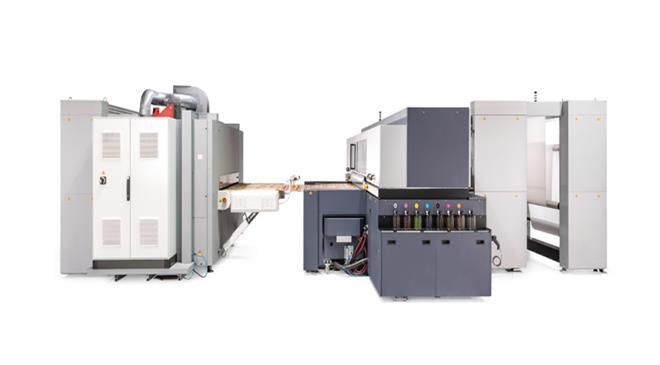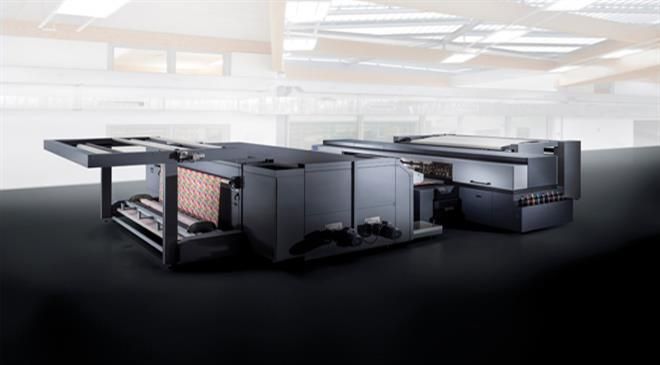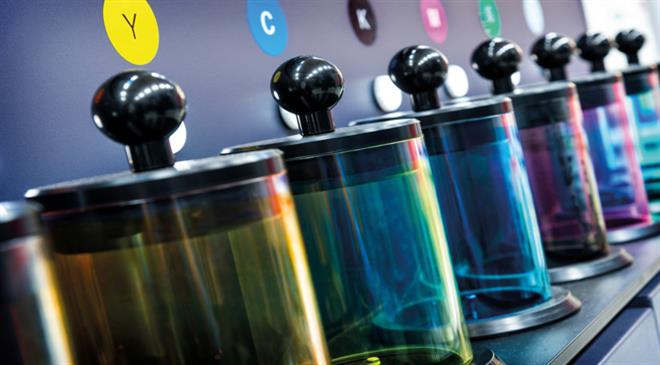On demand web-to-print businesses for textile applications expected to grow
With headquarters in Brixen, South Tyrol, Italy, Durst is a manufacturer of advanced digital printing and production technologies. In an interview with Fibre2Fashion, Dr. Stefan Kappaun, Executive Vice President, Durst Group, gives an outline of the core business areas of its digital printing business, the way the company is contributing to sustainability initiatives and new product developments.
How much is the global digital printing industry expected to grow? Which applications are set to dominate the print volumes?
According to Smithers Pira, the market for digitally printed textiles is expected to grow in terms of print output value to 4.9 billion euros in 2023. This represents a CAGR of approx. 13.4 per cent from 2018 to 2023. The highest growth rates will be with high volume machines. As published by Keypoint Intelligence Infotrends, high print volume machines with productivity levels of more than 630 m²/h will grow with rates of up to 33 per cent, reflecting a wider technology adoption in industrial fabric manufacturing and processing sectors.
While sublimation inks still dominate digital fabric manufacturing volume-wise, high print volume machines are mainly operated with reactive inks and, increasingly, pigment inks. Fashion and sportswear applications will continue to lead with over 62 per cent of print volume by 2023, while the home textile market shows a print volume growth trajectory of almost 19 per cent within the next three years. The pandemic might have paused or shifted that overall growth for a couple of months due to postponed investment plans, however, the customers' appetite for going digital is back again.
What is the growth story of Durst Group?
Durst is a family-owned company with its headquarters in Brixen, South Tyrol, Italy. Founded in 1936, Durst started off with pioneering photo enlargers and continued its innovation journey with a multitude of different photo products such as cameras (e.g Durst Automatica) or digital developers (e.g Lambda 130).
With the digital disruption of the photo business in the mid-1990s, Durst had to re-invent itself. Remaining true to the core competency of "reproducing images", Durst entered the field of industrial inkjet printing and initiated an impressive growth story. Soon, the company realised that a pure focus on machine engineering and print heads/electronics is not enough, so further know-how in the fields of applications and ink chemistry was established. Owning and optimising this "magic triangle of inkjet printing" is still considered as key success factor for bringing inkjet technology to industrial markets. Today, Durst is fully focused on digital printing technology and serves customers in the business areas (i) Graphics, (ii) Industrial Textiles, (iii) Labels and Packaging, (iv) Ceramic Tiles and (v) Corrugated Packaging with digital printing machinery, inks, services and software solutions.
How has covid-19 impacted your country, especially the business of digital printing technology?
Durst is a family-owned company with its headquarters in Brixen, South Tyrol, Italy. With a company history of more than 80 years, Durst is fully focused on digital printing technology today. Here, it serves customers in the business areas (i) Graphics, (ii) Industrial Textiles (iii) Labels and Packaging (iv) Ceramic Tiles and (v) Corrugated Packaging with digital printing machinery, inks, and service and software solutions. In the field of industrial textile printing, Durst offers highly productive Alpha product line that can be operated with reactive, pigment and dyesub Inks.
As any company in the world, Durst was also impacted by the pandemic. Especially during the first lockdown period from March to May 2020, the global demand for printed textiles dropped sharply. However, with the end of the first lockdown, the industrial textile printing business has also picked up again. Driven by the "new normal" in combination with re-thinking of supply chains, glocalisation and strong e-commerce push by many companies, digital textile printing proved to be the perfect match to this new business environment.
Who are some of your top competitors?
Similar to the international character of the textile industry, the suppliers of digital equipment are international. When it comes to high-speed printing machinery for quality demanding customers, Durst is the preferred choice. Players such as Reggiani or MS can be mentioned as competitors. In addition, Asian suppliers can be found in the marketplace with mostly much slower printing machines.
Where do your printing machines find application in?
Our high print volume machines are mainly operated with reactive inks and, increasingly, pigment inks. By fulfilling all relevant standards, regulations and brand requirements, the Durst Alpha series is utilised in large textile mills producing printed products for international brands as well as in web-to-print companies focusing on small lot sizes or fully customised products.

By what percentage has this affected profit and is likely to impact further?
While the global demand for printed textiles dropped sharply during the first lockdown period, our industrial textile business picked up again in the mid of 2020. In contrast to analog printing technology that was not fully utilised that time, digital industrial textile printers were running at full capacity. The ability to produce shorter run-lengths in a cost-efficient way together with ultra-fast design changes proved to be the perfect match for the new business environment - and still is! Doing so, the Durst industrial textile business was able to continue its growth also in 2020.

What are the new developments in terms of your product line? Kindly elaborate.
For customers with an industrial textile background, Durst offers the Alpha series. This machine platform comes in printing widths of 190 and 330 cm, respectively. It is designed specifically for industrial textile professionals, such as textile mills and web-to-print print houses, and offers impressive image quality combined with outputs of up to 1470 sqm/h in a so called dual-roll setup. Basically, two ink options are available: Alpha Reactive Inks for printing on cotton-based materials and Alpha Pigment Inks for printing on a broad portfolio of substrates ranging from cotton to blends and even polyester materials. The versatility, the hand-feel of the prints and the fastness properties of the pigment prints are very popular with the textile industry. At the moment, a lot of market interest is observed in this area especially in combination with the Durst Smart Shop solution allowing customers to enter into the e-commerce business straight away. As the mentioned inks are Oekotex-compliant and GOTS-compliant, a broad range of applications are possible: home textiles, fast and quality fashion, textile specialty products, and many more.
For direct-and transfer-printing on polyester and polyester-blend materials, Durst also offers dedicated product lines such as the Rhotex 325 and P5 TEX iSUB series. These are excellent products for fulfilling the trend towards consumer individualisation, especially in Point of Sale (POS), soft-signage, web-to-print and print-on-demand business environments. The recently introduced P5 TEX iSUB even comes with an inline fixation unit simplifying the entire production process even further.

Which of your product lines fulfills the demands of industrial textile printers?
For fulfilling the requirements of quality industrial textile printers, the Alpha product line provides the highest image quality, productivity, production flexibility, process stability and profitability because of Durst's pixel-to-output approach bringing together excellent machinery, sustainable ink technologies, application know-how and optimised software solutions.
How much is the digital printing industry set to grow in the next 5 years? What are the future trends?
The digital textile printing market shows high growth volumes due to variety of textiles and textile application possibilities. Digital textile printing is considered one of the major growth areas in the whole printing industry because of the broad range of applications as well as the rise of digital business models. In addition, the ever-changing awareness of wastage of water, materials and logistics is causing companies to switch from analog to digital production technologies. The associated digital market is experiencing double-digit growth year on year. According to different market research institutes, the digitally printed textile output is expected to overtake that of, for example, screen-printed textiles within the next three to six years. Apart from Pakistan and China, especially India, Bangladesh, Italy, Turkey, US, Mexico and Brazil will have the highest digital adoption rates. While Asian markets focus mainly on high-volume production and digitally printed premium export products, the western markets can mostly be described as project-based premium businesses with more local distribution channels and "made in…" marketing campaigns.
Sustainability across the supply chain is an imperative today. How earth-friendly is your product line?
Durst has always pursued an ecological and sustainable approach, which is also firmly entrenched in our corporate philosophy. Every technical solution is evaluated against its possible effects to people and the environment, which is why, for example, solvent and eco-solvent concepts have never been pursued within our graphics and textile businesses. This goes hand in hand with our concept of sustainable print solutions where it is our clear target to offer the most sustainable digital print technologies to our customers. This starts with considering the ink technologies but also the minimum substrate waste when feeding the machine and minimum waste generation, energy and water consumption in the machine manufacturing itself.
Putting the spotlight on the textile industry, it has one of the most extensive water and energy footprints of all industry sectors. Analog textile printing techniques generate high amounts of ink wastage, require the preparation, cleaning and storage of screens, do not permit short production runs and utilise high water amounts. For example, the water usage for rotary screen printing is in the region of 50-60 litres of water per metre of printed product. In contrast, digital textile printing technologies are far more sustainable than analog alternatives and pave the way towards a cleaner, more efficient and more profitable textile production approach: no ink is wasted in screens but also the water consumption is much lower. According to FESPA, digital textile printing saved more than 40 billion litres of water usage in the worldwide textile industry in 2018. From this example it is evident how digital printing and especially the Durst Alpha series is contributing to sustainability improvement of the industry.
How are factors like mass customisation and shorter lead times affecting the digital printing industry?
Drivers include continuing trends in customisation, availability of lower cost pigment inks, shorter run lengths and, in particular, the ongoing requirement for more sustainable production techniques. Apart from that, moves towards automated and IT driven textile manufacturing and supply chain processes are intensifying. On demand purchasing and web-to-print businesses for textile applications are expected to grow significantly. To be prepared for these future business models, industry innovators and early adopters have already started to change their business models towards the new market environment to strengthen and sustain their competitive advantages. High-end printing systems such as the Durst Alpha 190 or Durst Alpha 330 are not just designed to fulfill the demands of the textile industry, but also for being reliable production equipments in digital business models of the textile industry. With the Durst pixel-to-output approach, combining excellent machinery with application and workflow know-how, our customers have all necessary future success factors at hand.
Which are the major markets (geographically) for your printers?
Durst offers its digital printing equipment through its subsidiaries and sales partners. In doing so, the industrial textile market is served worldwide.
What are the marketing challenges you face in the current situation?
Textile evokes passion, and Durst is passionate about textile. The best way to communicate this to the customers is during personal contacts. Due to the pandemic, a lot of customer interactions had to be moved to virtual meetings. The entire team looks forward to meeting our customers in person again.
What are your expansion plans in the coming years?
The pixel-to-output strategy is an integral part of the Durst approach. We offer not just machines, inks and services; we offer top-quality customer support with the help of our Training and Consulting (TAC) team as well as latest software technologies. This resembles an integrated approach tailored towards utmost support to our customers-from the input of the very first pixel, to the output of the printed product.
With this pixel-to-output strategy, we are convinced to drive the further digitalisation of the industrial textile print sector and to contribute to the success of our customers. Durst already has a global presence, and we will continue to support our customers worldwide in the future. (PC)




